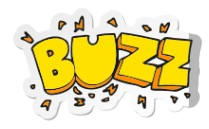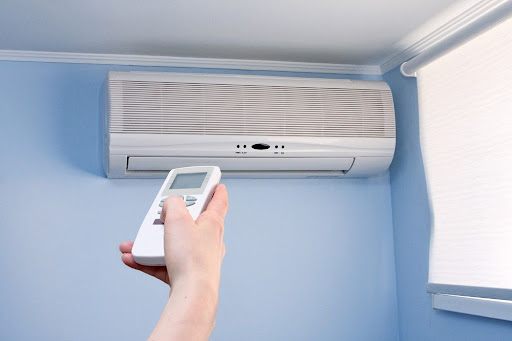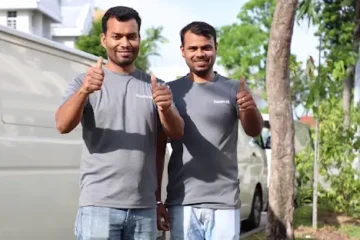When your cooling system suddenly stops working, it’s easy to panic, but many issues have simple fixes you can handle before calling for AC repair. Here’s how to safely troubleshoot why your unit won’t turn on and get it running again.
Why Your AC Won’t Start: Thermostat Set to Cool but AC Not Turning On
When your thermostat set to cool but AC not turning on, it’s often due to a few core culprits. Power issues such as a tripped breaker, blown AC fuse, or loose wiring can interrupt the AC power source. Thermostat errors, like incorrect settings or a dead battery, may prevent the unit from receiving the “on” signal. A dirty air filter can also restrict airflow, causing the system to overheat and shut down. Modern units may refuse to start if an access panel or safety switch is open, and compressor or capacitor failures can stop the system entirely.
If you’ve recently experienced a power surge or outage, your AC might simply need a reset. When the unit stays silent, it’s not always “broken”, it may be protecting itself. Think of it as a safety lock: the system senses something off and won’t start until it’s safe. Power hiccups after a storm, thermostat miscommunication, an overheated unit from a dirty filter, or a triggered safety switch can all cause this protective pause in the AC power supply.
An AC that won’t start is often saving you from a bigger repair. Understanding the reason behind the silence can save you hundreds in unnecessary service calls.
Check the AC Power Source Before You Call a Technician
Electrical issues usually leave behind clear clues. If your lights, display screens, or thermostat don’t turn on, start by checking the circuit breaker or fuse box. A frequent breaker trip signals a short circuit or an overloaded line, so don’t keep flipping it back, that’s your system begging for an inspection before wires overheat or capacitors fail.
A thermostat that’s blank or frozen may just need new batteries or a reset to cool mode. Unusual clicking sounds without startup often point to a failed capacitor or relay. Try running the fan-only mode on your thermostat, if it runs, your system has power, and the issue lies between the thermostat and outdoor unit or the AC power cable.
Electrical issues often leave a paper trail, flickering lights, a tripped breaker, a blown air conditioner fuse, or a dead thermostat screen, all signs that your AC is struggling somewhere along the AC power source.
Dirty Filters or a Blown AC Fuse Could Be the Cause
A dirty air filter or dust-clogged coils can cause the system to overheat and shut off to protect itself. When airflow is restricted, the evaporator coil can freeze up, the blower motor may trip an internal safety switch, and the compressor can short-cycle or fail to start altogether.
You’d be amazed how many “broken” air conditioners just need a cleaning. Dust, pollen, and pet hair clog filters and coils, making your system run hot, then shut down to prevent damage. If your outdoor unit looks like it’s wearing a fuzzy sweater or you see ice on your indoor coil, dirt is definitely the culprit.
Replace your filter every 1-2 months during heavy use. If you notice ice buildup or smell burning dust, shut off the AC power adaptor and let the system thaw before restarting to protect the AC power supply.
Thermostat Set to Cool but AC Not Turning On? Here’s What It Means
A thermostat can cause AC failure even when the rest of the system is fine. If the screen flickers, the room temperature feels off, or your AC doesn’t respond to mode changes, the thermostat may not be communicating properly. When the thermostat set to cool but AC not turning on, it often means there’s a break in communication. Try switching from cool to heat, then back, if there’s no “click,” that’s a clear sign of lost connection.
Remove the cover and gently blow away dust. If it’s hardwired, check the small wires, a loose “Y” or “C” wire can interrupt the signal to your AC. For smart thermostats, confirm the Wi-Fi connection and power source, since a weak signal can stop the “on” command from reaching the unit.
Replace thermostat batteries every six months to avoid false failures, dead batteries often mimic major system problems and can make it seem like your thermostat set to cool but AC not turning on.
Inspect the Outdoor Unit and the AC Power Cable
Inspect your outdoor unit if you hear the indoor blower running but no outdoor fan noise, or if you notice debris, leaves, or vines blocking airflow around the condenser. The outdoor condenser is like the “lungs” of your system, if it’s suffocating under dust or vegetation, it can’t breathe. A humming sound without the fan spinning usually points to a failing capacitor, which can still hold a dangerous charge even when the AC power source is off, so never reach into the fan cage.
Check your indoor unit if the blower motor doesn’t start, water pools near the drain pan, or you notice a musty smell, all signs of clogs or moisture buildup. Always disconnect power at the breaker or AC power cable before inspecting or touching any components connected to the AC power adaptor.
How to Safely Reset the AC Power Adaptor and System
Resetting can often solve minor glitches, but there’s a right way to do it. Turn off your thermostat first, then cut power to the AC at the breaker for about 60 seconds. Turn the breaker back on, wait another minute, and switch your thermostat back to cool, setting it lower than the room temperature.
For smart thermostats, use the reset or “reboot” option in the app or settings. If your system has a small red reset button on the outdoor unit or AC power adaptor, press it only once, multiple resets can trigger lockout mode.
If the unit clicks or hums after you restore power but doesn’t start, that sound helps a technician pinpoint where communication has broken down between the AC power supply and control board.
When the AC Power Supply Fails, Call a Professional
Call an expert if you’ve already checked the power, filters, and thermostat and the AC still won’t turn on, at that point, it’s past the DIY stage. Signs you need professional help include frequent breaker trips, burning smells, grinding or buzzing noises, ice on refrigerant lines, or the system running without cooling.
If you see moisture, sparks, or smoke near electrical panels, shut the system down immediately. Short-cycling, when the AC turns on and off quickly, is often an early warning of compressor or control board failure caused by a weak AC fuse or unstable AC power source. Electrical and refrigerant issues can escalate fast, and a professional diagnosis can prevent costly damage.
Prevent Future Issues with Your AC Power Source
Keep your AC reliable with a few simple habits. Change filters every 30-60 days, an easy reminder is to do it when you pay your electric bill. Schedule professional maintenance every spring before the first heat wave, since that’s when systems most often fail. Clear at least two feet of space around your outdoor condenser for proper airflow, and keep it shaded but well-ventilated to reduce wear on the compressor and AC power cable.
Test your thermostat monthly, inspect ducts and insulation to reduce strain, and install a surge protector, it’s inexpensive protection against AC power supply damage. Systems that get regular tune-ups can last 30-40% longer, meaning you could add several extra years to your unit’s life.
Most AC “failures” are actually communication breakdowns between components or sensors. A quick reset might fix it, but if not, a trained technician can pinpoint whether the thermostat set to cool but AC not turning on problem is linked to a weak AC power adaptor, damaged AC fuse, or faulty AC power source.
Keep an eye for more latest news & updates on Web Of Buzz!




